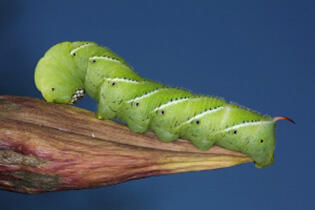
LSTM Seminar Series continued this week with a presentation by Dr. René Feyereisen, Director of Research at the Institut National de la Recherche Agronomique (INRA) in France. His seminar “All in good time: Biochemistry and evolution of insect P450 enzymes” was introduced by LSTM’s Dr Mark Paine. Dr Feyereisen is recognized internationally for his research on insect biochemistry, physiology, and toxicology, and especially the functions of cytochrome P450 enzymes.
Dr Feyereisen started with a brief introduction to the Cytochrome P450 monooxygenase (CYP) genes, explaining that they are one of the largest multi-gene families in plants and animals. They have a number of crucial functions, such as metabolising hormones, being responsible for the colour and fragrance of plants, and are of key importance in the detoxification of drugs and insecticides.
His seminar focussed on P450s in insects, stating that each different species has on average between 80 and 140 P450s, and while their sequences are highly variable, their 3D structures are quite highly conserved.
He went into detail about aspects of the P450 reaction cycle and the flow of electrons through the process. He made the point that the cycle can be short circuited causing the production of toxic oxygen radicals. Since some of the P450 reactions are slow, it raises the question as to whether this might have evolved this way to prevent excessive off-target damage.
Dr Feyereisen then looked at P450 gene induction and it’s protective role against some toxins, for example the tobacco hornworm will convulse when it first ingests the tobacco plant with its high toxic nicotine content, 24 to 36 hours later it can happily eat the plant due to the induced levels of detoxifying P450.
He concluded by discussing P450 gene duplication and mutation, and the fact that it in evolutionary terms it is ‘extraordinarily rapid’, with a new P450 gene evolving every 5 million years or so. Finally, he looked at the CYP4G family, which is responsible for the hydrocarbon synthesis that produces a waxy cuticular coat that protects against desiccation. He made the observation that CYP4G genes are absent in several water loving arthropods, leading to the idea that CYP4G may very well be responsible for insects leaving the water and colonizing the land; a fascinating hypothesis to end what was an extremely interesting seminar.